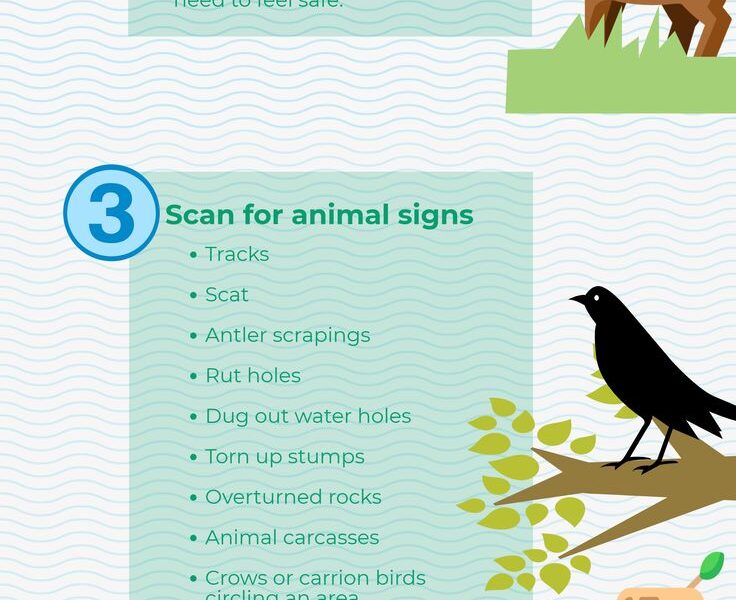How to Stay Safe from Wildlife While Hiking
body { font-family: Arial, sans-serif; line-height: 1.6; margin: 20px; }
h1, h2, h3 { color: #2c3e50; }
How to Stay Safe from Wildlife While Hiking
Hiking is a wonderful way to connect with nature, get some exercise, and clear your mind. However, it’s important to remember that you are a visitor in the habitats of various wild animals. While most encounters with wildlife are harmless and even awe-inspiring, it’s still crucial to know how to stay safe.
Do Your Research
Before you hit the trail, research the types of animals that inhabit the area. Knowledge of the local wildlife can help you prepare appropriately. Understand their behaviors and active times. For instance, some animals are more active at dawn and dusk.
Stay on Marked Trails
Marked trails are designated for a reason. They not only protect the natural habitat but also keep you secure. Wander off-trail, and you might inadvertently stumble upon an animal’s territory, increasing the risk of an encounter. Staying on the path reduces surprises for both you and the wildlife.
Make Noise
Making noise while hiking can prevent you from startling animals. Talk to your hiking companions or sing softly. This is especially important in areas with dense vegetation where animals cannot see you from a distance. The sound of human voices can prompt them to keep their distance.
Know What to Do If You Encounter Wildlife
- Bears: If you see a bear from a distance, stay calm and slowly back away. Do not run. If the bear notices you, speak firmly and slowly wave your arms to make yourself look bigger. Use bear spray if the bear gets too close, aiming for its face.
- Mountain Lions: Maintain eye contact and try to appear larger by raising your arms or opening your jacket. Do not run. If the mountain lion approaches, throw stones or sticks. Fight back if attacked.
- Snakes: Most snakes are non-aggressive. If you see one, give it space to retreat. Do not attempt to handle or provoke it. Watch where you step, especially in rocky or grassy areas.
- Deer and Moose: These animals can be unpredictable. Give them plenty of space and make sure you do not come between a mother and her offspring. Back away slowly if you find yourself too close.
Carry Safety Gear
Specific safety gear can be a game-changer in wildlife encounters. Bear spray is highly effective for deterring bears. A walking stick not only assists with hiking but can also help keep smaller animals at bay. A whistle can be useful for scaring off animals or signaling for help.
Hike in Groups
There’s safety in numbers. Predatory animals are less likely to approach groups of people. Hiking companions can also help spot wildlife before you get too close. If something does go wrong, having others there ensures you receive help quickly.
Store Food Properly
Animals are drawn to the smell of food. Store snacks and food items in airtight containers. Avoid leaving food scraps behind. Some animals have an excellent sense of smell and can detect food from far distances. Proper food storage can prevent unwanted visitors at your campsite or during breaks.
Wear Bright Clothing
Bright clothing can make you more visible to animals, reducing the chance of startling them. It can also help other hikers spot you more easily. Whether walking through dense woods or open terrain, vivid attire makes you stand out.
Stay Alert
Constantly scan the surroundings while hiking. Look for tracks, droppings, and other signs of wildlife. Being aware of your environment enables you to spot animals before getting too close. Awareness gives you more time to react appropriately.
Respect Animal Signs
Many parks and trails feature signs warning about recent animal activity. Pay close attention to these signs. They provide details on specific animals that may be in the area, helping you prepare and take necessary precautions.
Avoid Night Hiking
Many animals are nocturnal and are more active at night. Hiking in the dark increases the likelihood of an unexpected encounter. Stick to daylight hours for the safest hiking experiences. If you must hike in low light, carry a flashlight and stay extra vigilant.
Educate Others
Share what you know about wildlife safety with fellow hikers. Knowledgeable hikers can collectively reduce risks of dangerous encounters. Exchange tips and experiences to improve collective awareness and preparedness.
First Aid Knowledge
Despite best efforts, sometimes encounters happen. Knowing basic first aid can make a critical difference. Carry a first aid kit and know how to treat common injuries, including bites and stings. Quick, correct responses can mitigate further complications.
Be Mindful of Seasons
Animals’ behaviors can change with the seasons. For example, bears are more active in spring and fall. Understanding seasonal behaviors can help you anticipate animal movements and stay safer on the trails.
Stay Clean
Avoid using scented lotions or perfumes before a hike. Strong smells can attract animals. The less likely you are to be detected by your scent, the better. Additionally, cleaning up thoroughly after meals eliminates lingering food odors.
Taking the right precautions ensures that your hiking adventure is enjoyable and safe. When you respect wildlife and their habitats, you create a safer environment for everyone – including the animals who call these areas home.
“`
